Navigating Life Insurance Choices
Understanding Your Life Insurance Options Can Be Overwhelming—Let Us Guide You Through the Types, Advantages, and Disadvantages
Contemplating life insurance can lead you down a path of endless choices. At Goldberg & Goldberg, we believe informed decisions start with a clear understanding. Before you listen to any sales pitch, let’s demystify the range of life insurance policies so you can make a choice that aligns with your needs without falling prey to unnecessary bells and whistles.
Term Life Insurance
Term life insurance delivers a straightforward proposition: if you pass away within the policy’s active period, your beneficiaries receive a predetermined benefit. For instance, a $130,000 policy with a five-year term disburses the amount if you die within those five years. Surviving beyond this term equates to no financial payout — just the ongoing tapestry of life’s joys and struggles. This policy is purely protective, with no cash value accumulation.
Young individuals or parents seeking considerable coverage without a hefty price tag will find term life insurance most appealing. Given the low mortality rates in one’s 20s to 40s, the premiums are particularly affordable. Short-term needs, like securing a business loan, also make term insurance an attractive option. However, it’s important to note that as you age, premiums increase in relation to the benefit of the policy due to the inherent increased risk of passing away.
Be aware that term policies vary. Some offer guaranteed renewability or the ability to convert to a permanent policy without additional medical exams, albeit often at higher rates. It’s important to remember though, term insurance doesn’t guarantee lifelong coverage.
Permanent Life Insurance
When it comes to lifelong protection that doubles as an investment, permanent life insurance stands out, albeit with a higher price tag. This policy type assures that as long as premiums are paid, cancellation is off the table. Early on, your premiums exceed the cost of insurance coverage, funneling excess into a reserve fund managed by the insurer, potentially yielding returns that enhance the policy’s value or are available for loans.
Permanent insurance has the notable perk of tax-deferred accumulation, with certain withdrawals remaining untaxed, distinguishing it from standard taxable interest account gains. However, it’s essential to consider that insurance is not primarily an investment tool. For those with investment as a primary goal, buying term insurance and investing the savings elsewhere may be more beneficial.
Whole Life Insurance
Whole life insurance, or “straight life,” offers a fixed benefit for equally fixed payments throughout your lifetime. Premiums are typically higher in the early years, contributing to cash reserves and potentially becoming more economically advantageous as the risk of death increases with age. However, for young families with limited financial flexibility, the initial high premiums may not be practical.
Universal Life Insurance
Universal life insurance merges the features of term and whole life, adding adaptable premiums and coverage amounts. This flexibility often results in a lower overall cost compared to whole life. Universal life also distinguishes itself with transparency regarding premium allocation, offering insights often not found in whole life policies.
Variable Life Insurance
For those looking to intertwine insurance with investment, variable life insurance invests cash reserves in the securities market. Your investment return, hence, reflects market movements, adding an element of financial opportunity — and risk.
Variable Universal Life Insurance
Variable universal life insurance is essentially a hybrid, offering investment options of variable life with the payment and coverage flexibility of universal life.
Single-Premium Life Insurance
This option requires a one-time upfront payment, securing the policy in full. It’s a substantial initial outlay, but for those looking to transfer a fully-funded policy or seek estate tax savings, it can be a strategic move.
Survivorship Life Insurance
Also known as “second to die” insurance, survivorship life policies cover two lives, typically spouses, and pay out only after both have passed. While not aimed at smaller estates, it can play a critical role in estate planning for wealthy couples or for preserving family businesses across generations.
Federal Taxes and Survivorship Life Insurance
Survivorship life insurance’s tax implications are complex and evolving. Consult with an estate planning attorney to ensure that your policy complements your estate planning goals. A life insurance trust might be the most advantageous structure for these policies.
At Goldberg & Goldberg, we understand looking into life insurance is pivotal and often personal. Our commitment extends beyond legal advice — we offer you a Free Consultation to discuss the life insurance landscape and tailor guidance according to your unique situation. Contact us at (301) 654-5757, where clarity and advocacy are just a call away.




